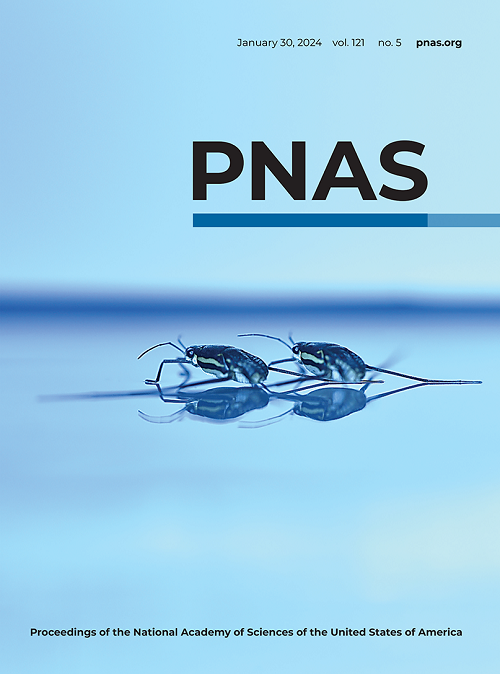Nongenetic adaptation by collective migration
IF 9.4
1区 综合性期刊
Q1 MULTIDISCIPLINARY SCIENCES
Proceedings of the National Academy of Sciences of the United States of America
Pub Date : 2025-02-19
DOI:10.1073/pnas.2423774122
引用次数: 0
Abstract
Cell populations must adjust their phenotypic composition to adapt to changing environments. One adaptation strategy is to maintain distinct phenotypic subsets within the population and to modulate their relative abundances via gene regulation. Another strategy involves genetic mutations, which can be augmented by stress-response pathways. Here, we studied how a migrating bacterial population regulates its phenotypic distribution to traverse diverse environments. We generated isogenic求助全文
约1分钟内获得全文
求助全文
来源期刊
CiteScore
19.00
自引率
0.90%
发文量
3575
审稿时长
2.5 months
期刊介绍:
The Proceedings of the National Academy of Sciences (PNAS), a peer-reviewed journal of the National Academy of Sciences (NAS), serves as an authoritative source for high-impact, original research across the biological, physical, and social sciences. With a global scope, the journal welcomes submissions from researchers worldwide, making it an inclusive platform for advancing scientific knowledge.

 求助内容:
求助内容: 应助结果提醒方式:
应助结果提醒方式:


